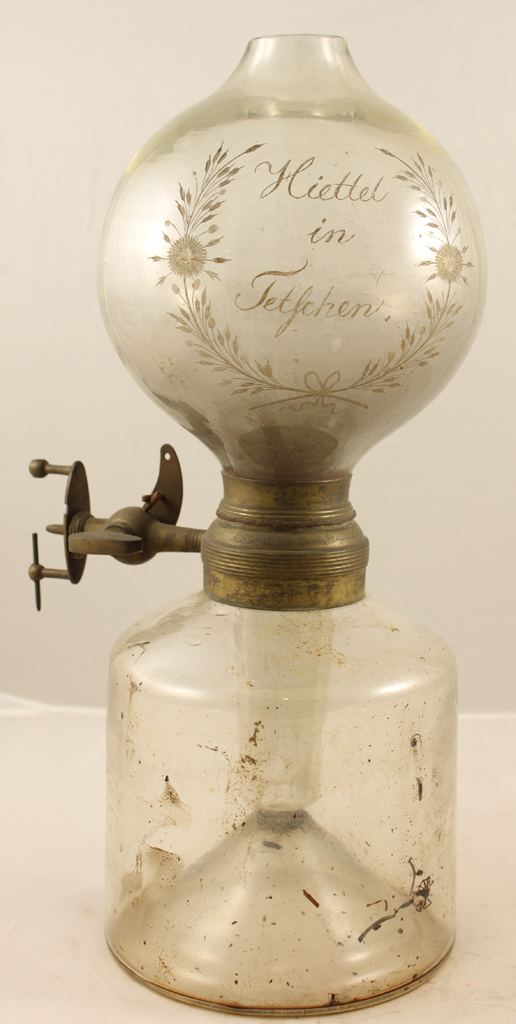 | ||
Döbereiner's lamp, also called a "tinderbox" ("Feuerzeug"), is a lighter invented in 1823 by the German chemist Johann Wolfgang Döbereiner; the lighter is based on the Fürstenberger lighter and was in production until ca. 1880. In the jar, similar to the Kipp's apparatus, zinc metal reacts with dilute sulfuric acid to produce hydrogen gas. When a valve is opened, a jet of hydrogen is released onto a platinum sponge. The sponge catalyzes reaction with atmospheric oxygen, which heats the catalyst and ignites the hydrogen, producing a gentle flame.
It was commercialized for lighting fires and pipes. It's said that in 1820s over a million of the "tinderboxes" was sold.
Examples of the lighter are exhibited in the Deutsches Museum and in the old pharmacy at Heidelberg Castle.
